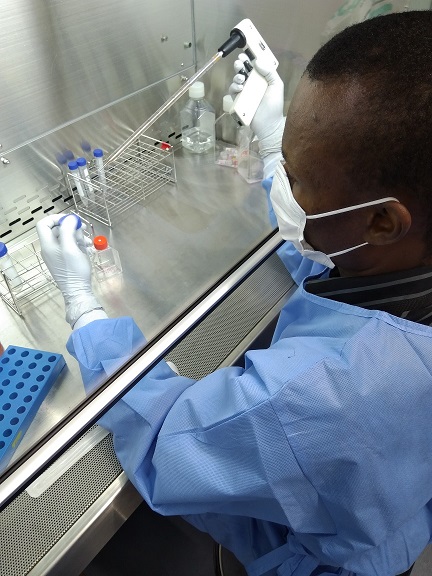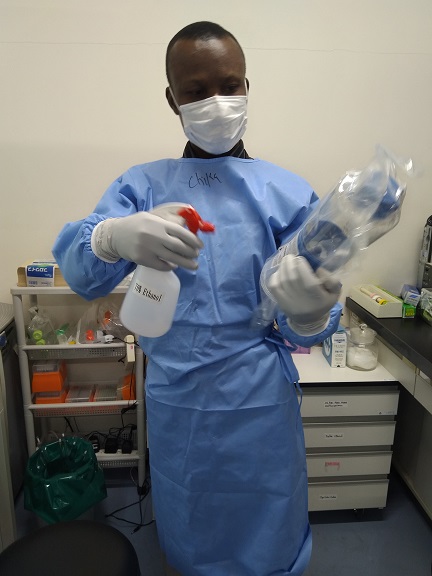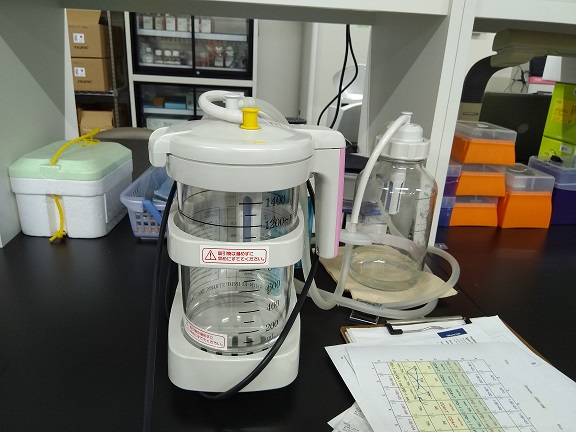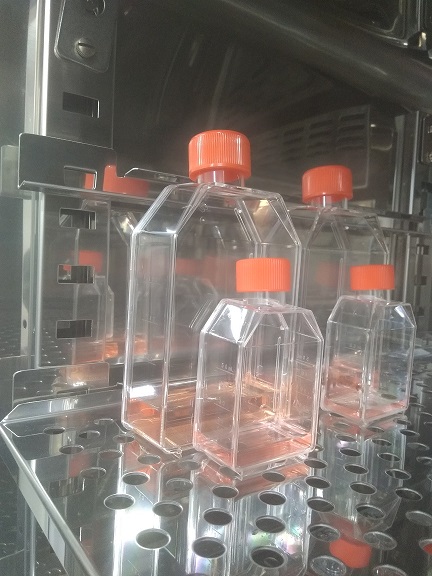ADVANTAGES OF CELL CULTURE TECHNIQUES
- Cell culture is economical since it is carried out in vitro (i.e. in culture flasks or dishes). It requires small portions of reagents and media unlike in vivo techniques that require a whole organism.
- Homogenous cells are produced since the growth environment can be controlled in vitro.
- The physiology and biochemistry of cells can be studied and manipulated in vitro.
- In cell culture techniques there are no ethical, moral or legal issues as is the case in experimentation that involves the use of a whole animal.
- Cells in a culture flask/dish can be exposed to chemicals or drugs directly.
DISADVANTAGES OF CELL CULTURE TECHNIQUES
- Cell culture techniques are usually capital intensive. They should be undertaken only when necessary.
- Cells in cell culture flasks are denied of some in vivo materials such as hormones and other supporting structures that the isolated cell interact with in vivo.
- Success in cell culture techniques requires expertise to know the behaviour of cells in culture. The aseptic techniques involved usually takes some time to learn.
- The artificial condition in vitro may cause the cells to produce different substances (e.g. proteins) from the ones they produce in vivo.
- It is almost impossible to reproduce an in vivo process in an in vitro technique like cell culture.
References
Alberts B, Bray D, Johnson A, Lewis J, Raff M, Roberts K andWalter P (1998). Essential Cell Biology: An Introduction to the Molecular Biology of the Cell. Third edition. Garland Publishing Inc., New York.
Alberts B, Bray D, Lewis J, Raff M, Roberts K and Watson J.D (2002). The molecular Biology of the Cell. Fourth edition. New York, Garland, USA.
Ausubel, F.M., Brent, R., Kingston, R.E., Moore, D.D., Seidman, J.G., Smith, J.A., Struhl, K., eds (2002). Short Protocols in Molecular Biology, 5th edn. John Wiley & Sons, New York.
Caputo J.L (1996). Safety Procedures. In: Freshney, R.I., Freshney, M.G., eds., Culture of Immortalized Cells. New York, Wiley-Liss, Pp. 25-51.
Cooper G.M and Hausman R.E (2004). The cell: A Molecular Approach. Third edition. ASM Press.
Davis J.M (2002). Basic Cell Culture, A Practical Approach. Oxford University Press, Oxford, UK.
Freshney R.I (2005). Culture of Animal Cells, a Manual of Basic Technique, 5th Ed. Hoboken NJ, John Wiley and Sons Publishers.
Health Services Advisory Committee (HSAC) (2003). Safe Working and the Prevention of Infection in Clinical Laboratories. HSE Books: Sudbury
Lodish H, Berk A, Matsudaira P, Kaiser C.A, Kreiger M, Scott M.P, Zipursky S.L and Darnell J (2004). Molecular Cell Biology. Fifth edition. Scientific American Books, Freeman, New York, USA.
Marcovic O and Marcovic N (1998). Cell cross-contamination in cell cultures: the silent and neglected danger. In Vitro Cell Dev Biol. 34:108.
Mather J and Barnes D (1998). Animal cell culture methods, Methods in cell biology. 2rd eds, Academic press, San Diego.
Verma P.S and Agarwal V.K (2011). Cytology: Cell Biology and Molecular Biology. Fourth edition. S. Chand and Company Ltd, Ram Nagar, New Delhi, India.
Discover more from Microbiology Class
Subscribe to get the latest posts sent to your email.





